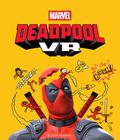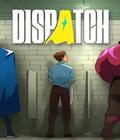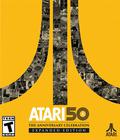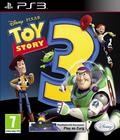It's been 11 years since "Toy Story 2" came out, but Disney Pixar hasn't lost its stride during the long absence. Based on the positive reaction from critics and moviegoers alike, "Toy Story 3" is just as good as, if not better than, previous entries. As with other mass-marketed movies, there is an inevitable video game tie-in, and Disney and Avalanche Software (along with Asobo Studio for the PSP iteration and n-Space for the NDS) have released the video game to all available gaming platforms. One would expect Toy Story 3: The Video Game to be mediocre at best and, at worst, a complete disgrace to the film. At first glance, the game seems to follow the road to high mediocrity, but the inclusion and execution of a particular mode elevates the game to above-average status.
The plot of Toy Story 3: The Video Game loosely follows that of the movie. You start off with a chase as you try to catch up with a speeding train that's carrying all of Bo Peep's stolen sheep. The level acts like a tutorial to teach you all of the necessary attack and movement mechanics. Once you complete the level, you'll be sent to the world map, which resembles a board game. The levels play like set pieces from the film, highlighting events such as the toys trying to get Andy's attention, the arrival at the day care center, and the subsequent escape. The three heroes (Buzz, Jessie and Woody) are available at the same time, and while one of them could take on the level, there will be times when you'll need to constantly switch between them solve problems. For example, Buzz can throw the two other characters for great distances, Jessie can balance precariously on narrow objects and Woody can use his lasso to grapple on to objects.
The Story mode doesn't just let you replay parts of the film, though. In a few spots, the game takes liberties with the source material and deviates from the movie. For example, you'll get a level where you play the part of Buzz Lightyear in his own video game or take Woody through a house that's being filled with coffee and toward an escape. These levels range from awesome to surreal, but they do a good job in ensuring that the Story mode is more than a simple retelling of the film.
The pace of the Story mode is somewhat casual, and certain mechanics skew the game toward younger players. For one, death seems more like an inconvenience than something more substantial. You have infinite lives, and each death brings you back a few steps prior to where you died, with all of your collected items still intact. The other tell that lets you know this was intended for kids is the overall length of the game: With about eight chapters, Toy Story 3's Story mode clocks in at about six hours. It is short enough that younger players can finish the game before getting frustrated, but those who are hoping for a more substantial experience will feel cheated despite the presence of a co-op mode.
When you look at Story mode, Toy Story 3 seems to be something that young fans would enjoy, but the game has a mode that turns heads: Toy Box. You start of by choosing Buzz, Emperor Zurg (if you pick up the PS3 version), Jessie or Woody. After picking your character, you're immediately appointed sheriff of the town and sent to do your job. From here, the game becomes an open-world adventure much like Grand Theft Auto, but without the extreme violence and controversy.
You can pick up missions from townspeople, and those missions range from something simple like mining three gold piles to finding a lost boy in a deep well. The completion of each mission and mining for gold yields coins, which can be exchanged for several different things in the world, including new characters and new buildings that, in turn, open up new missions to undertake. All of the missions can be done in any order, and the player can even try to take on a few simultaneously. Outside of the missions, there are a few other activities that players can engage in, including various races and decorating the town's citizens and buildings in any way they desire. In a way, the open-ended nature of this mode, along with very loose guidelines about what can and can't be done, makes it more appealing than the main Story mode.
There are a few minor flaws in the Toy Box mode, though. No matter who you choose to be sheriff, the tasks and abilities will always remain the same. You might see different animations for the various tasks, but the only reason to choose any character is personal preference. The other flaw comes with the environment. It may be nice to traverse the Wild West, but considering that your co-stars are fit for outer space travel, it is surprising that no such environment exists. Even if the environmental change were merely superficial, it would have made the Toy Box mode feel a little more open.
The controls do their job well enough. For the most part, it'll be easy to grasp the basic jumping and attack controls as well as some of the more complicated maneuvers, like the wall jump. There are a few issues with the controls, though, that become frustrating. For one, the sensitivity of the context-sensitive button is a bit too high. You sometimes have to be in the right position to get the button to appear in order to perform the indicated action. Other times, you'll find yourself mashing the button so that you can be sure you're performing the action during the prompt's short window. The other issue has to do with the turning speed of the camera. The default is very slow, and even though this is a title for children, some kids could find the slow speed to be frustrating. It also becomes a factor in race sequences with a defined track, since you'll waste more time turning the camera than actually racing. Thankfully, most of the game doesn't consist of areas where camera-turning and context sensitivity are paramount to finishing the level, but those two issues stand out as big flaws in an otherwise good control scheme.
The graphics are good, though they certainly aren't flawless. The protagonists' character models move rather well and look exactly like their big-screen counterparts. The same goes for the secondary characters and enemies, though some of them, like the townspeople, only seem limited due to their limbless design. Thanks to the bright colors, the environments have some life, and the scale is done wonderfully well. The game runs at a smooth frame rate, and the particle effects from fireworks and laser blasts don't slow down the game at all. One major complaint is the pop-in of textures. While the objects show up correctly, the player can always see the blurry, low-resolution textures appear before the higher resolution, more detailed ones pop in place. It becomes more evident during the first camera fly-by on a level, and while it eventually clears up, it is sad that a game that isn't very graphically intensive can be plagued with this issue.
Most Disney games excel in the sound department, and for the most part, Toy Story 3 continues that proud tradition. The effects are great, with none feeling out of place in the world. The music does a good job of emulating the type of score while carving out its own personality. The Randy Newman song, "You've Got A Friend in Me," is out in full force for the game, though it tends to play too often in the world map and title screen. Depending on how much you like the game, you'll either love this fact or quickly grow sick of the tune. The song sometimes has trouble loading on the world map, forcing you to listen to silence for a while longer. As for the voices, almost all of the original voice actors from the film make an appearance so that the audio experience is as authentic as possible. For the sound-alikes, the ones for Buzz and Jessie do a great job of emulating their big-screen counterparts. However, Woody's voice sounds much deeper than usual, destroying the immersion a bit.
Toy Story 3: The Video Game is a very interesting title. On one hand, the Story mode tries its best to deviate from the movie for a bit, and while it works, it barely raises the game beyond a decent rating. On the other hand, the open-world nature of the Toy Box feels so refreshing and fun that one wishes it were the entire focus of the game. Thankfully, every other technological aspect of the game, from the controls to the graphics and sound, work well enough so that the entire experience is enjoyable. Fans of the movie series will have lots of fun with this one, as will younger fans who are in need of a new platforming game. The older set should stick with the Toy Box mode; you'll be surprised at how much time you'll spend with the game.
Score: 7.5/10
More articles about Toy Story 3: The Video Game











 Toy Story 3: The Video Game features a story mode that follows the Toy Story 3 film adventures in which Buzz, Woody and friends grapple with their uncertain future as Andy prepares to depart for college, as well as a Toy Box mode allowing fans to create their own unique story.
Toy Story 3: The Video Game features a story mode that follows the Toy Story 3 film adventures in which Buzz, Woody and friends grapple with their uncertain future as Andy prepares to depart for college, as well as a Toy Box mode allowing fans to create their own unique story.

































